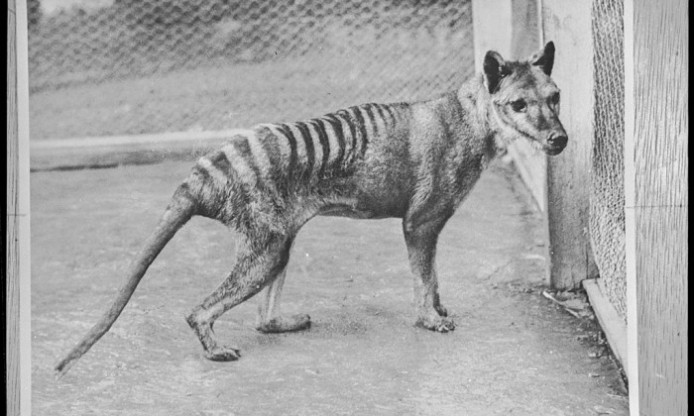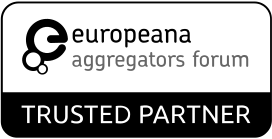Img. Thylacine at Beaumaris Zoo in 1936. Photo by Ben Sheppard. Public Domain via Wikimedia Commons.
Within the statutory goal of highlighting initiatives aiming at preserving and enhancing photographic heritage, PHOTOCONSORTIUM is happy to introduce the “Passenger Pigeon Manifesto”: an independent call initiated by Adam Harangozó following the Passenger Pigeon project at The Chicago Academy of Sciences and its Peggy Notebaert Nature Museum.
The Manifesto invites public galleries, libraries, archives, and museums to continue embracing the process of digitization of, and free access to, cultural (photographic) heritage, illustrated with the cautionary tales of extinct species, the remains of which are only in heritage documentations, like the above photograph of one of the last thylacines, a species which became extinct in 1936.
Extract from the Manifesto:
“We are supposed to learn from history yet we don’t have access to it. Historical photographs of extinct animals are among the most important artefacts to teach and inform about human impact on nature. But where to look when one wants to see all that is left of these beings? Where can we access all the extant photos of the thylacine or the passenger pigeon? History books use photos to help us relate to narratives and see a shared reality. But how can we look through our own communities’ photographic heritage, share it with each other and use it for research and education?
Historical photos are kept by archives, libraries, museums and other cultural institutions. Preservation, which is the goal of cultural institutions, means ensuring not only the existence of but the access to historical materials. It is the opposite of owning: it’s sustainable sharing. Similarly, conservation is not capturing and caging but ensuring the conditions and freedom to live.
Even though most of our tangible cultural heritage has not been digitised yet, a process greatly hindered by the lack of resources for professionals, we could already have much to look at online. In reality, a significant portion of already digitised historical photos is not available freely to the public – despite being in the public domain. We might be able to see thumbnails or medium sized previews scattered throughout numerous online catalogs but most of the time we don’t get to see them in full quality and detail. In general, they are hidden, the memory of their existence slowly going extinct.”
The Manifesto supports the open access approach for publicly-funded memory institutions. Despite the big challenges relating to sustainability of the digitization effort, offering free access to reasonable-sized online images is in the mission of cultural heritage institutions in the digital transformation process. While no-one questions about lawful copyright to be applied to digital cultural heritage items, sustainable solutions must be sought for allowing this heritage to be truly visible.
Read the entire Manifesto: https://ppmanifesto.hcommons.org/


